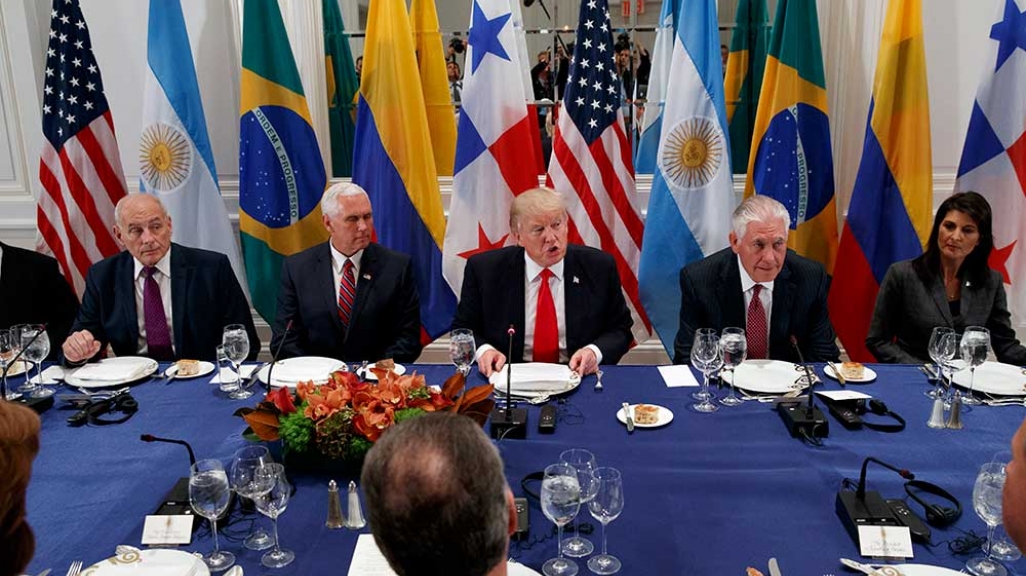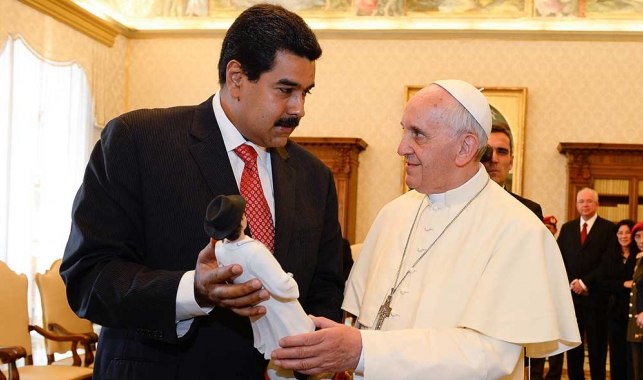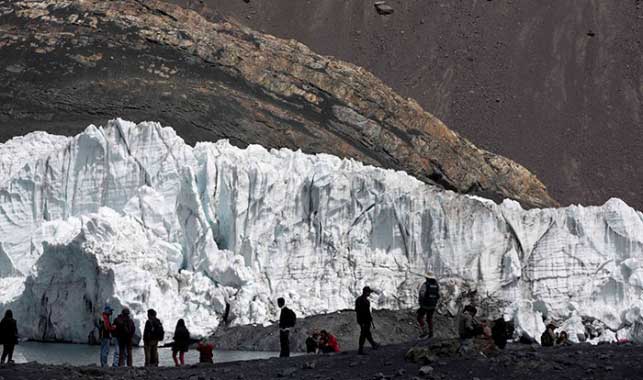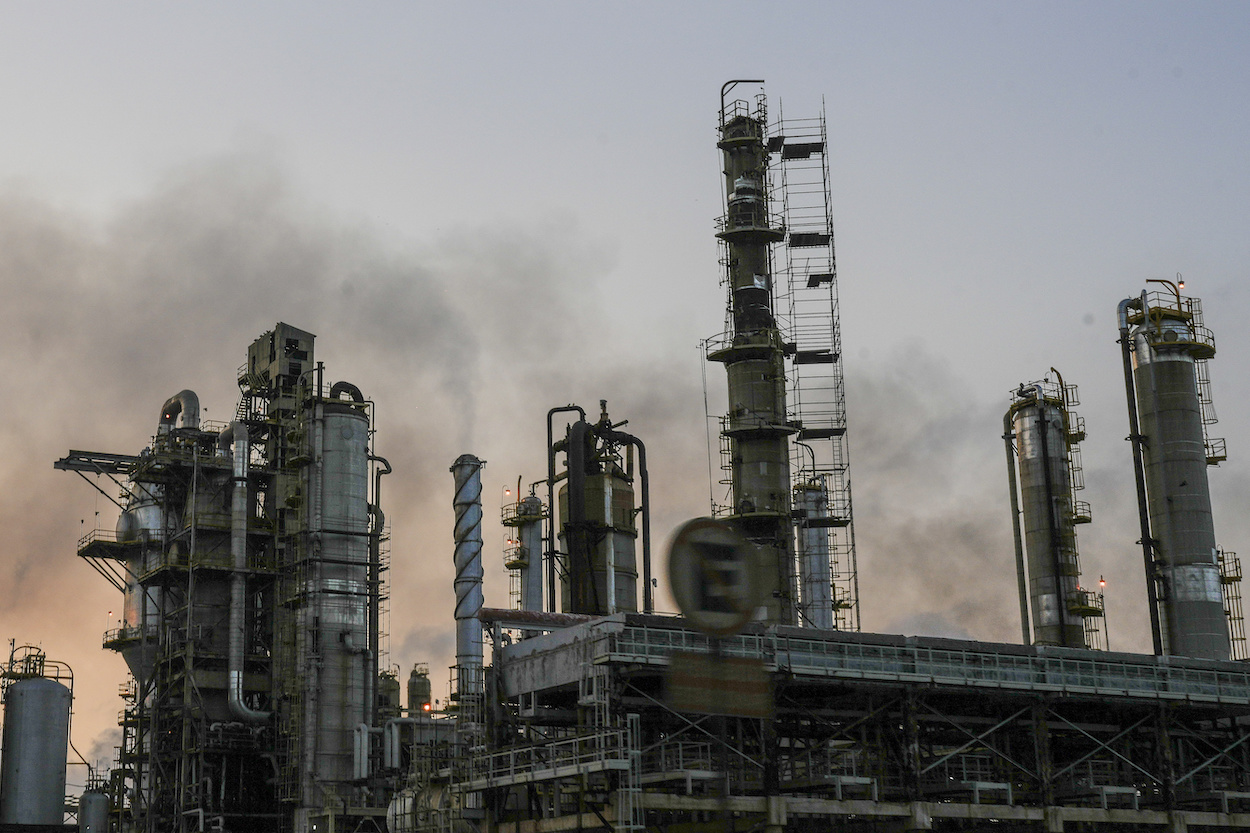Update: Top Latin America Issues to Watch at UNGA
Update: Top Latin America Issues to Watch at UNGA
As UNGA debates for the first time in the Trump era, these are some of the main topics facing the Americas.
Updated September 21, 2017 — There’s no doubt that U.S. President Donald Trump’s first appearance at the UN General Assembly is dominating headlines as world leaders land in New York this week. As UNGA opens for the seventy-second time, what are some of the major issues for the Americas in the Trump era?
Trade
A cornerstone of Trump’s campaign and presidency is an inward-looking, “Buy American” policy, typified by his decision to withdraw the United States from the Trans-Pacific Partnership (TPP) within three days of taking office. Trump also threatened more than once that next up on the chopping block is the 23-year-old North American Free Trade Agreement (NAFTA), which he famously dubbed the “worst trade deal ever made.” And while he picked up a familiar line of decrying trade deficits in his inaugural address to the UN General Assembly (UNGA) on Tuesday morning, he did also acknowledge the economic bonds Washington has with Latin America and that those are foundational to the security and prosperity of the region.
In August, Canada, Mexico, and the United States began talks aimed at modernizing NAFTA, but the process has not been without its bumps. Just last week, U.S. Commerce Secretary Wilbur Ross said Washington would seek a sunset clause that would require NAFTA members every five years to reconsider or end the deal. Canada and Mexico have indicated they won’t go along with such an idea as it would create uncertainty for investors.
But even if the United States is taking a protectionist turn, much of Latin America has yet to go along. Opening the UNGA debate, Brazil’s President Michel Temer said, “We don’t believe in protectionism as an answer for economic woes.”
With threats about NAFTA’s end looming, Mexico’s President Enrique Peña Nieto—who won’t be attending UNGA—visited China earlier this month. Aside from getting closer to Beijing, Mexico is stepping up commercial ties with the European Union, Argentina, and Brazil. And TPP signatories also hope to bolster trade relations, with or without the United States. In June, Australia, Canada, New Zealand, and Singapore became associate members of the Pacific Alliance, a trade bloc comprising Chile, Colombia, Mexico, and Peru that accounts for 54 percent of Latin America’s global trade.
Pacific Alliance leaders met on the sidelines of UNGA at an AS/COA event on September 20. Hear what they had to say.
Venezuela
The presidents of Brazil, Colombia, and Panama, along with the Argentine vice president, joined Trump for a working dinner on Monday evening in New York to talk about the crisis in Venezuela. Though Trump has openly mulled both economic sanctions and even military intervention against Caracas, Brazilian President Michel Temer said after the meal that, “No one wants a foreign intervention.” In his UNGA address the following morning, Trump called for “the full restoration of democracy and political freedoms” in Venezuela.
One loss for the debate—and for the dinner with Trump—is Peruvian President Pedro Pablo Kuczynski, who was forced to stay home and deal with a political crisis after the opposition-led Congress sacked his entire Cabinet right before he was to fly up to New York. PPK, as he’s known, has been one of the most vocal heads of state in his criticisms of Venezuelan President Nicolás Maduro.
The UN only recently took up the topic of Venezuela, with its human rights commissioner saying on September 11 that he believed “crimes against humanity” had taken place under the Maduro administration. Neither the commission nor the UN Security Council has ever passed a resolution on Venezuela.
Refugees and immigration
The number of forcibly displaced people is approaching 66 million globally, making refugees and migration major UN challenges.
In a hemispheric context, the White House’s harsher stance on immigration has a Latin American effect. In September, Trump announced a plan to “wind down” Deferred Action for Childhood Arrivals (DACA), an Obama administration executive policy protecting roughly 800,000 immigrants who entered the country as undocumented children. Some 79 percent of DACA recipients are Mexican, and Latin America represents nine of the top 10 countries when it comes to total beneficiaries.
Next up, the Oval Office will reportedly end a refugee program allowing children from El Salvador, Guatemala, and Honduras to join U.S.-based parents. Also under threat is Temporary Protected Status (TPS) granted to tens of thousands of Haitian, Honduran, Nicaraguan, and Salvadoran immigrants unable to return home due to natural disasters. The Trump government has until November to decide whether to extend TPS status for Haiti, Honduras, and Nicaragua and until January in the case of El Salvador.
But migration policy isn’t just a U.S. concern. In Mexico, asylum requests are expected to hit 20,000 this year, up from 1,300 in 2013, in part because of Trump’s immigration policies. In South America, Venezuelans facing crisis at home are mounting an exodus primarily affecting neighboring Colombia, which itself has one of the highest numbers of internally displaced persons in the world. As of 2015, there were nearly 9 million internally displaced Latin American and Caribbean people, largely as a result of conflict, natural disasters, or organized crime.
The UN will be negotiating the Global Compact on Migration in 2018, and Latin America was the first of six regions to hold a summit on the topic when countries came together in Chile in August to back a cooperative—rather than security-based—global migration policy. In his first UNGA address, Ecuador's Lenín Moreno voices support for the free movement of people as part of the Compact, adding that closing borders is not a solution "and never has been in the history of mankind."
Climate change and natural disasters
A series of storms pounded across the Caribbean and Gulf of Mexico in recent weeks, leaving devastation behind in places such as Cuba, Puerto Rico, and the Dominican Republic.
Rising sea levels and warmer oceans result in stronger storms, and Latin America and the Caribbean are seeing more of the effects, whether floods, droughts, mudslides, or melting glaciers. It’s no wonder the region worries more about climate change than any other in the world; Latin America accounts for about 9 percent of global emissions, but could face $100 billion a year in damages by 2050 as a result of climate change. "We're the developing countries that pay the highest costs," said Ecuador's Moreno. "We need to care for our common home if we want to ensure the planet's survival."
The region generally backs the UN’s multilateral approach to the issue. Despite the fact that the United States, the hemisphere’s largest emitter, announced intentions of leaving the Paris Climate Accord, Latin America is unlikely to follow a similar path, say Brown University’s Guy Edwards and Transforma's Isabel Clavier in Americas Quarterly. “The support for multilateralism reveals a more assertive foreign policy; and in the case of climate change, this means an explicit rejection of the Trump administration’s position,” write the climate experts. Trump did not mention climate change in his 40-minute address to the General Assembly.
Other topics:
- Trump spoke out against the “corrupt, destabilizing regime” in Cuba, heralding his administration’s June announcement that it would continue to enforce the embargo. Havana, in turn, published Trump’s entire speech in Granma.
- While Moreno took up what’s been an important rallying cry for women’s rights and anti-gender violence in Latin America in the last year—Ni Una Menos—from the podium, Costa Rica’s Luis Guillermo Solís acknowledged women’s resilience in light of discrimination. “It’s not easy being a Khaleesi,” he said, referencing the Game of Thrones character seen as a symbol of female empowerment.
- Colombian President Juan Manuel Santos insisted on the need for new, more holistic approaches to fight narco-trafficking. “The war on drugs has not been won, and we’re not winning the war on drugs,” he said. The statement was a rebuff to the United States, which favors more hard-handed methods like the aerial fumigations Bogotá suspended two years ago. The week prior, Trump said he was considering decertifying Colombia as a partner in the war on drugs over a surge in cocaine production there—the first time a U.S. president suggested such a move in almost 20 years.









